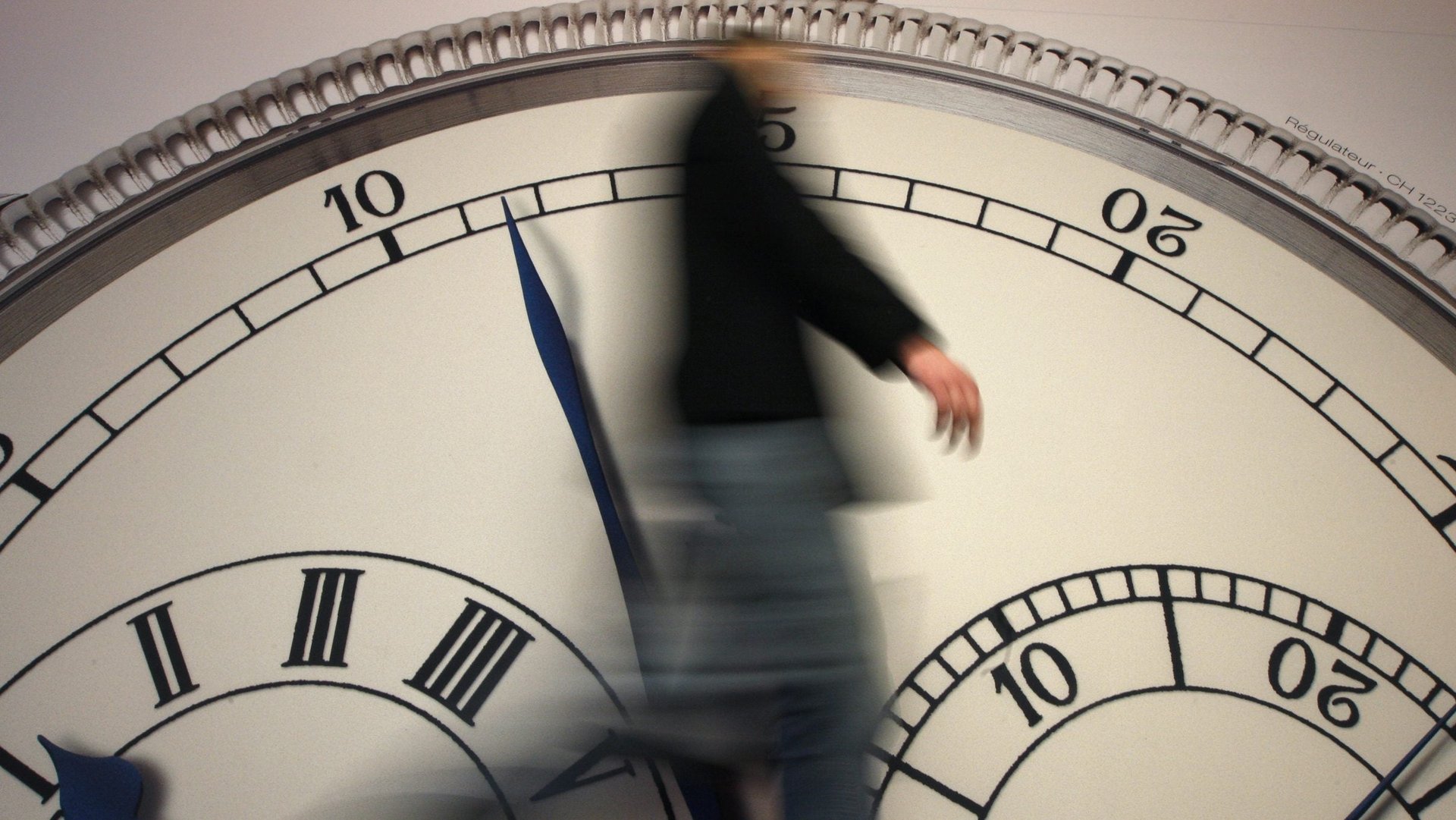Almost everyone is creative around the same time every day
There’s some basic information about ourselves that we rarely, if ever, act on: When are we sharpest or dimmest—or happiest, or flattest—throughout the day? Or, for nocturnal types, the night?


There’s some basic information about ourselves that we rarely, if ever, act on: When are we sharpest or dimmest—or happiest, or flattest—throughout the day? Or, for nocturnal types, the night?
Although we may know our patterns well enough to answer that question, most of us schedule events—or get pulled into them—haphazardly. This is especially true for workday meetings. “The only criterion we use is availability,” says author Daniel Pink. He calls this habit “managerial malpractice.”
What we all should be doing instead, he says, is treating timing as a strategic decision, because our mood and mental capacities fluctuate dramatically throughout the day and according to a predictable pattern, as Pink explains in his new book, When: The Scientific Secrets of Perfect Timing (Riverhead Books, 2018).
That basic pattern is driven by a few factors, but most importantly our chronotype, or our natural schedule for waking, winding down, and sleeping, encoded in our DNA. Generally, the world can be divided into three basic categories: early-rising larks, night-dwelling owls, or somewhere in-between, what Pink calls “third birds.” If you’re up at 6 am or earlier, even on days you don’t have to be, you’re probably a lark. Studies show that most adults are third birds, however, rising later in the morning. Night owls, and many teenagers, can sleep until midday.
Pink has gathered evidence from diverse disciplines that shows how third birds and larks are most alert and best able to make smart decisions in the mid- to late-morning. In the afternoon, cognitive studies have shown, our minds become rather sluggish. Our memory is not as sharp and we’re not making quick connections between ideas. To use an example from the book, poor larks and third birds may not instantly figure out why a coin marked 544 BC is a fraud, were they asked at this time. In the late afternoon and evening, however, we regain some cognitive ground. In the case of owls, Pink writes, this all happens in different order: recovery, trough, peak.
It’s not just our energy levels and thinking patterns that follow this mild rollercoaster; our mood tracks a very similar peak-trough-recovery path, Pink found. Taken together, most of us are best able to focus and analyze in the morning, and to be creative or looser in the late afternoon. “During the recovery hours, we’re not nearly as vigilant as we are at our peak,” says Pink. “But combine rising mood with less vigilance, and that makes it a good time for brainstorming.”
This is the time when you might avoid that one person in the room who deems every idea terrible, because they’re looking for the potential pitfalls, not the possibilities. ”It’s also what makes it a good time to socialize,” says Pink. “But I think really good brainstorming sessions have a social element in them.”
The fact that people are mentally peaking and dipping at different times may explain why some meetings are wildly uneven in terms of who is solving problems and who is slouching in the corner. In small groups, therefore, it makes sense to consider what you want to get out of a meeting, and whom you’re inviting, before you book a time slot. “If Person A is a strong lark, and Person B is a strong owl, and they’re meeting at 9 am to go over some complicated financial statement, one person is going to be doing a lot better than the other person,” says Pink. “Their ability to work together is going to be a little bit strained.”
On the other hand, in a bigger meeting, you might want the variety of cognitive styles. That’s if what you’re talking about doesn’t involve only huddling over spreadsheets or only dreaming up new ideas. Here, gathering all the birds around the table means that “the group mind will be more versatile,” Pink says.
The disasters tend to strike when a manager schedules a boring tactical meeting in the mid-morning, when most employees could be happily producing their highest quality work. Or when someone is asked to be inventive at a time of day when they’d be better off in their cubicle, hiding from questions and eschewing big-picture thinking and instead working through the daily drudgery.
Pink’s message is simply to act with intention. Ask: “Is this a meeting that requires conceptual thinking? Is this a meeting that’s purely administrative?”
As Pink notes, “We know that there are time-of-day effects on people’s cognitive abilities, but we don’t think: How are people going to be feeling at this meeting? Where are people’s strengths going to be?”
To be fair, it hasn’t escaped every brainstorm-loving leader that they’re better off tossing around ridiculous possibilities in the late afternoon. New York Times Styles editor Choire Sicha once told a fashion magazine that, “There’s a sort of a magic hour in media between 5 pm and 7 pm when you’re tired and you start talking about dumb ideas, and then your dumb ideas become real.”
But that kind of thinking is hardly the rule. “Truly, there’s not a single organization that I know of that thinks of when you hold the meeting as something that’s material and significant,” says Pink. Instead, he said, ”we think about what time a meeting is going to be held with the level of strategic thinking we give to what type of paper towels we’re going to use in the restrooms.”
Our internal clocks deserve more respect.